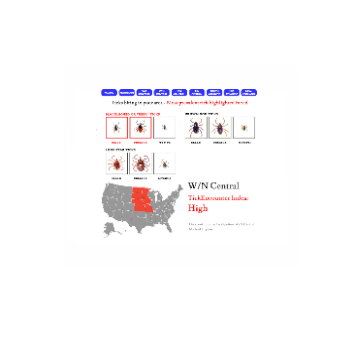Science Source
Potential Vertical Transmission of Winter Ticks (Dermacentor albipictus) from Moose (Alces americanus) Dams to Neonates
- States North American moose (Alces americanus) have been known to experience intense infestations of winter ticks
- States infestations have averaged ~33,000 ticks/moose, with some individuals carrying >100,000 ticks
- States moose calves and yearlings may be more vulnerable than adults to the effects of ticks, perhaps contributing to population declines
- Researchers documented the presence of adult winter ticks from neonates (baby moose), presumambly vertically transferred from dams (the mothers)
- Results give the first report (to scientists' knowledge) of winter ticks infesting moose neonates
- Results also give the first report of winter ticks switching hosts in free-ranging populations
- States winter tick infestation of neonatal moose could result in life-long adverse effects on fitness if infestations are great enough to cause appreciable blood loss or pathogen transmission, leading to a possible demographic effect
Related Content
Real Time Data

Mar 29, 2016 | Tick Encounter Resource Center, University of Rhode Island
Current US Tick Activity
Headline

Mar 29, 2016 | onearth
What’s Killing Minnesota’s Moose?
Science Source
| National Wildlife Federation
Wildlife in a Warming World
Science Source
| Parasitology Research
Seroprevalence, isolation, first genetic characterization of Toxoplasma gondii, and possible congenital transmission in wild moose from Minnesota, USA
Shiv K. Verma, Michelle Carstensen, Rafael Calero-Bernal et al


